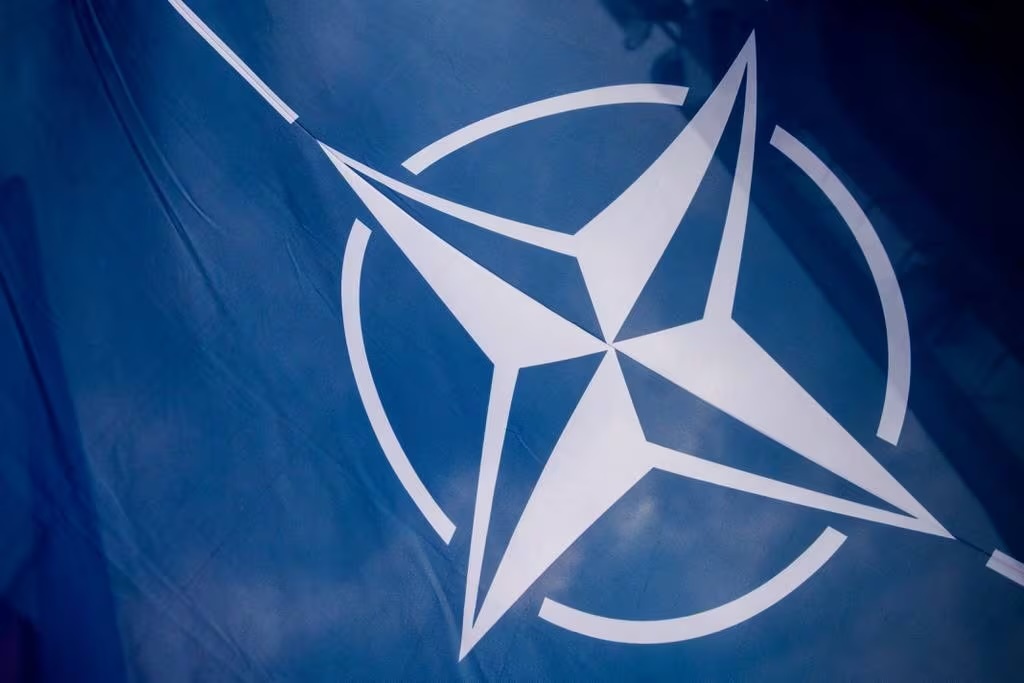8.06.2024

A NATO flag is set up prior to the signing ceremony of the law ratifying the NATO Protocol on Finland and Sweden's membership in July 22, 2022. (Mateusz Slodkowski/AFP via Getty Images)
The importance of space has been increasing for allied defense, deterrence, operations and resilience over the last few decades. This summer’s NATO summit in Washington presents a key opportunity to build on the alliance’s nascent space policy and structure at an inflection point for NATO and space power.
NATO has made slow, steady progress on space policy for just over a decade. NATO published its first policy-level document related to space in 2012 and focused on space support to operations, but not until 2019 did NATO release a new space policy and declare space an operational domain.
Two years later NATO confirmed that Article 5 applies to space — a timely development that took place a mere four months before Russia’s direct-ascent anti-satellite test. In 2022, the NATO Strategic Concept underlined the vital role of space for NATO’s deterrence and defense posture. Based on the architecture provided by these strategies and documents, NATO has been attempting to operationalize its space enterprise in the past years in its role of harmonizer, enabler and coordinator among space-faring allies.
NATO also exhibited substantive organizational changes that reflected a commitment to its policy. For example, NATO established the Space Center at Allied Air Command in 2020, which has grown modestly and serves as a space focal point by sharing information about potential threats and space activities.
More recently, in 2023, the NATO Space Center of Excellence in Toulouse, France, was accredited. This center will convene more than 15 sponsoring nations to provide knowledge and analysis focused on three operational functions: space domain awareness, operational space support and space domain coordination.
NATO also has introduced two projects to support its efforts: one looking up at space for better situational awareness of objects and events for strategic decision-making, called Strategic Space Situational Awareness System; and one looking down from space to enhance space-based intelligence, surveillance and reconnaissance, called Alliance Persistent Surveillance from Space.
These developments are a good start, but they are inadequate given the growing threat to space security and the growing importance of space for NATO specifically and society more generally.
Despite the declining state of its space program, Russia has effectively attacked key elements of space infrastructure as part of its full-scale invasion of Ukraine. Russia is routinely jamming positioning, navigation and timing systems, which impactsmilitary operations and increases risks for civilian aviation. Russia is also jamming communications satellites.
Russia has also demonstrated effective cyber capabilities against space-enabled communications. These trends in non-kinetic malicious attacks against space resources will likely increase in frequency and intensity in the future, so allied preparations will be essential in meeting the challenge.
NATO has set some broad, ambitious goals to transform for the future. The NATO Warfighting Capstone Concept, the alliance’s North Star for its military transformation through 2040 opens the door for space to be a significant component of a multidomain operations-enabled alliance.
However, to be successful, NATO needs to identify specific actions that move beyond understanding and appreciating space to fully operationalizing the domain. The following actions are things NATO should undertake and articulate as specific objectives at the 2024 NATO summit.
NATO should enhance its role as a coordinating hub for space-faring allies at the strategic level. NATO is not an autonomous space actor; however, it can play an essential role in harmonizing allied space efforts.
NATO should consider establishing a space committee, modeled after its Resilience Committee, to help set the priorities for space efforts within the alliance, translating NATO allies’ level of ambition for space into concrete actions and guidance. Given the important role of the European Union in space, NATO should create an associated NATO-EU space task force to coordinate with the EU.
Operationally, NATO should enhance allied space domain awareness and build a common allied space domain picture. This could be done by elevating the role of the NATO Space Center through greater information and data sharing, as well as additional personnel with the requisite technical expertise. Greater information sharing through both governments and industry would help fully operationalize the center, which will be important in any future conflict with an adversary that attacks space capabilities.
Related to capabilities, NATO should include space capability requirements in this year’s NATO Defence Planning Process. As a precursor to a focus on capabilities, allies should adopt an interoperable-by-design approach for its space architecture. This effort should focus on identifying key interoperability gaps and codifying standards to address them. Technical discussions about standards and interoperability should draw on best practices from industry and other organizations, such as the EU, rather than starting from scratch.
Finally, NATO needs to think more openly and proactively about space deterrence and defense. Allies need to understand how to operate in space — and especially how Article 5 may apply to allied activities. A scenario-based discussion involving an Article 5 contingency could be particularly helpful in outlining authorities, responses and gaps in allied planning, as well as the threats that may warrant action and the specific contexts in which this may take place.
Russia’s extensive use of electronic warfare and its multiyear effort to develop a space-based nuclear weapon provide clear motivation and use cases to jump-start this important effort.
Ideally, NATO will “throttle up” and undertake all these initiatives as part of a comprehensive package of actions announced at the NATO summit. Adopting just a few would be better than none, but failing to act now in the face of a proactive and capable Russia risks falling short of a mature NATO space enterprise at a time when the geopolitical environment needs it most.
Quelle: C4ISRNET
